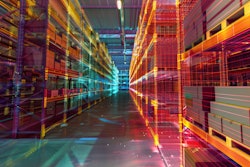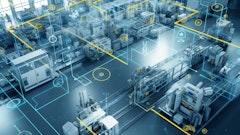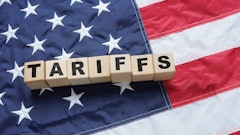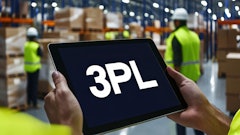
A shift in regulatory requirements and corporate climate pledges is cooking up some changes for food and beverage distribution companies. Mid-sized companies are critical contributors to their clients’ Scope 3 emissions, meaning more of these companies are being asked to report their carbon footprint. Big-box retailers require emissions reporting from the food and beverage companies they work with. Further, companies looking to do business in California and the European Union are potentially subject to report their emissions.
If the status quo continues, global food system emissions could increase by up to 80% from 2010-2050, further exacerbating the impacts of climate change. Food and beverage companies must recognize their responsibility to prioritize carbon data management before, during, and after deploying any emissions reduction strategy, across Scope 1, Scope 2, and Scope 3.
Organizations require accurate data to effectively understand their environmental impact and thereafter set and achieve emissions reduction targets. Understanding Scope 1, Scope 2, and Scope 3 emissions can drive internal mechanisms to instill accountability, finesse strategy, and measure progress. Without this key information, companies cannot confidently identify which strategies and tools will help achieve their goals.
Assess emissions sources
A resilient food system requires organizations to account for all emissions within their organizational boundary and supply chain, not just those that are convenient to abate. A climate transition plan cannot succeed without accounting for all emissions associated with energy use, refrigerants, water consumption, and waste – both within operations and throughout the supply chain. Organizations beginning their carbon reduction journey can implement changes that will make a difference now, save money, and boost public perception. But to track any resulting emissions, cost, or energy savings, food and beverage organizations need accurate and accessible data from the start. Without it, the story of their success will remain unknown and untold.
If your organization has never completed a greenhouse gas inventory, start with understanding the operations within your direct control, just like you would for financial accounting. The resulting Scope 1 and 2 emissions of these operations can be determined easily by summing your electricity, fuel, refrigerant, and natural gas use over the year and applying regional emissions factors. Identifying key opportunities in these areas and tracking progress against a baseline is the foundation of an effective greenhouse gas inventory. It’s easy to get discouraged during this stage of the journey, but it isn’t an excuse for inaction. If emissions data is not available, it is possible to model usage after sites with similar operations or in nearby regions.
In general, a good climate transition plan will include:
● A greenhouse gas (GHG) inventory
● Inventory analysis
● Roadmap and target setting
● Business strategy
● Strategy implementation
● Tracking and reporting
● Digital tools to leverage the power of data, including but not limited to carbon accounting software, energy management software, and carbon offsets
The business case for carbon data management
Carbon data management is an ongoing practice to collect, analyze, and report emissions data, which can be resource-intensive. Thankfully for our planet and the well-being of humanity, the external factors driving companies toward comprehensive carbon management are plentiful and growing. For example, how will external drivers like energy market prices and extreme weather events affect the value chain? Many companies face a volatile energy supply resulting from increased load demand, natural disasters, shaky markets, and other climate-related factors. How can companies adjust their operations in real-time to maintain efficiency despite growing energy disruptions?
The answers are in the data. Companies can use data to adjust operations in real-time by leveraging advanced data analytics, real-time monitoring systems, and predictive modeling to identify potential energy disruptions, optimize energy usage based on fluctuating supply, and make immediate adjustments to production schedules, equipment settings, and facility operations to minimize disruptions and maintain efficiency.
In a manufacturing facility, dynamically responding to data could look like adjusting production lines based on real-time energy costs and shifting to less energy-intensive processes during peak demand periods. For commercial buildings, smart building systems can dynamically adjust lighting and HVAC based on occupancy levels and weather conditions.
In almost every case, dynamic data response improves the efficiency and profitability of operations.
The sector must also respond to real-time consumer expectations. According to the 2024 IFIC Food & Health Survey, 56% of consumers consider buying local, 52% look for offerings that do not contain bioengineered ingredients, whether the food is bioengineered, over half of consumers value animal welfare factors, and the fair and equitable treatment of workers in the food production process is top-of-mind for 46% of shoppers. Successful companies leverage hard data by showcasing metrics related to their stated values through transparent reporting and data visualization, effectively demonstrating their commitment to customers and building trust by proving their values are not just rhetoric but backed by concrete actions.
Engage supply chain for holistic impact
According to the CDP, food and beverage Scope 3 emissions represent nearly 80% of all lifecycle emissions in the sector. This broad swath of emissions might be out of the corporation’s direct control, but they can still be driven down by creating resilient value chains.
In addition to amassing mission-critical data and analyzing material risks, organizations need to peel away layers of their supply chains and engage stakeholders in building a unified reporting system capable of capturing big-picture data to satisfy Scope 1, Scope 2, and Scope 3 reporting requirements.
Armed with these insights into supply chains, organizations are empowered to make pinpoint decisions. And because the food and beverage sector is such a heavy emitter, these pinpoint decisions can be leveraged for outsized positive impacts on the climate, creating a virtuous cycle powered by good data. Food and beverage companies must take ownership of their position in the supply chain and support emissions reporting and reduction – and it starts with data.
Identify risks and opportunities
Organizations must consider the value of resilient supply chains and build meaningful relationships with suppliers to scale sustainability and resilience, which can buffer against supply chain shocks and market disruptions. Mapping your company’s supply chain and assessing Scope 3 emissions will highlight hotspots for emissions reductions, as well as create resilient supply chains, and protect against supply disruptions by providing a detailed understanding of where potential vulnerabilities exist within your network.
By proactively identifying these risks, companies can avoid significant financial impacts through early mitigation rather than costly emergency responses. This foresight prevents production shutdowns, revenue losses, price volatility exposure, and compliance penalties that directly affect profitability. Companies gain competitive advantage through operational stability while avoiding the substantial costs of reactive crisis management.
In turn, working with your customers and understanding your role in their Scope 3 emissions is good business and will help make you a supplier of choice.
Expertise and digital tools
Partnering with carbon management experts is an effective way to understand organization-wide sustainability issues and deploy impactful strategies. As demand for real-time carbon data grows, organizations need digital tools to grow with it. But it’s often not enough to rely on digital tools without understanding the underlying assumptions – finding knowledgeable carbon experts who can help collect, decipher, and act on data is often invaluable.
Without a transformation, an organization will struggle to decarbonize, and siloed solutions won’t be adequate in rapidly escalating regulatory and stakeholder landscapes. A more sustainable economy starts with a comprehensive climate transition plan and the tools and frameworks to accelerate measurable progress. What gets measured gets done, and implementing carbon data management practices that measure up is an excellent place to start.















![Pros To Know 2026 [color]](https://img.sdcexec.com/mindful/acbm/workspaces/default/uploads/2025/08/prostoknow-2026-color.mduFvhpgMk.png?ar=16%3A9&auto=format%2Ccompress&bg=fff&fill-color=fff&fit=fill&h=135&q=70&w=240)



